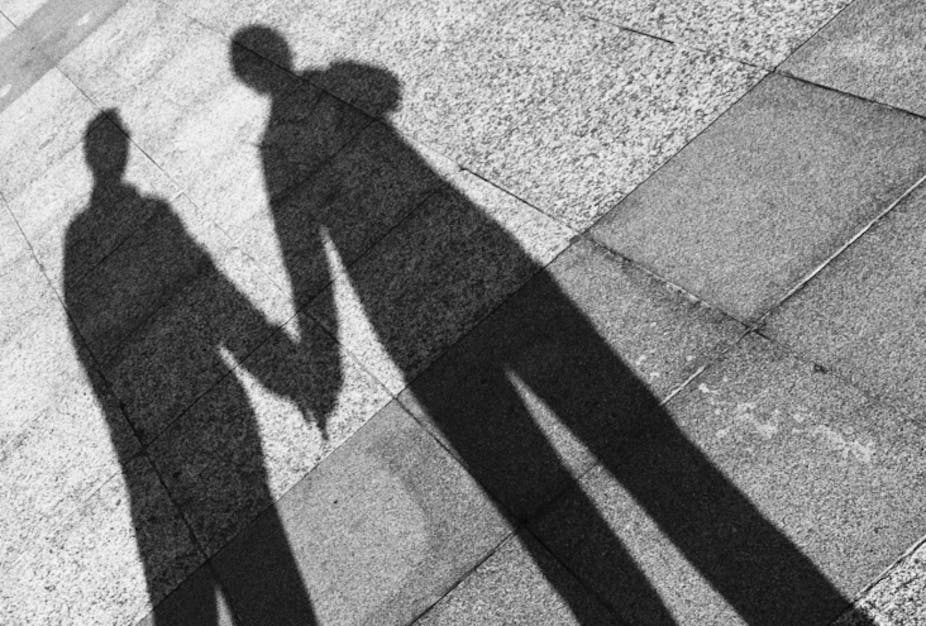LGBT citizens in Scotland today can marry, be in civil partnerships, adopt children and have careers knowing their right to work is protected. Political leaders identify as gay or bisexual – and Scotland recently topped a European league table measuring legal protections offered to LGBTI people.
But all this marks a radical shift. For many years Scotland lagged behind England and Wales in recognising sexual diversity. Gay and bisexual men and women were starved of acceptance and recognition and subjected to intense homophobia – as recorded in a new BBC Scotland/Hopscotch Films documentary, Coming Oot: A Fabulous History of Gay Scotland, for which I was a historical consultant.
Scotland did not decriminalise gay sex between consenting men until 1980, 13 years after England and Wales. Where change in England and Wales was precipitated by the 1957 Wolfenden report, in Scotland there was a fly in the ointment: James Adair, a former procurator fiscal and religious conservative who produced a minority report against decriminalisation. He claimed open homosexuality would elicit public “disgust”, promote male prostitution and enable “perverts to practise sinning for the sake of sinning”.
The General Assembly of the Church of Scotland also opposed change, as did most of the press. Yet the biggest obstacle was a legal one. Because Scottish criminal convictions require the corroboration of two different pieces of evidence, homosexual acts behind closed doors were rarely prosecuted. The law instead focused on acts in parks, toilets, and tenement closes. The Scottish consensus seemed to be that if private male sex wasn’t prosecuted, why go to the trouble and expense of changing the law?
Hard times
Of course, this ignored the civil liberties of Scottish LGB men and women, who were largely unaware of the selective application of the law. Coming Oot captures the pressures of men and women desperately trying to look, or even be, heterosexual. When I interviewed 24 gay and bisexual men active in that era, a quarter had married in an attempt to think or become “straight”. Other men presented a heterosexual facade to family and work colleagues while secretively visiting bars where gay men met.
Physical threats, robberies and police intimidation were all common. “Stephen” recalled being harassed by two undercover police officers in the 1960s who encouraged him to end his miserable “queer” life by jumping from Glasgow Bridge.
Some doctors even offered “treatments”. “Morris” was prescribed female hormonal treatment, which little affected his desires but made him grow breasts and lose his facial hair. Others sought help from psychiatrists, only some of whom were supportive. During the 1960s “Frankie” was sent to a child psychiatrist, only to be psychologically scarred by warnings of paedophilia, and the devastation that homosexuality would wreak upon his life and career.

Coming Oot also highlights the invisibility of lesbians in Scotland, untouched by legal sanctions but subject to the same stigma. They occupied a strange hinterland where their rights to pleasure were either ignored or viewed with passive distaste. A 1970 letter from the Crown Office in Scotland makes a short but telling comment:
As far as female perverts are concerned, they have never been a problem to this office.
Small steps
Yet as the period progressed, so did some attitudes. The Church of Scotland offered premises to Scotland’s first homosexual law reform organisation after its establishment in 1969. The arrangement ended in the early 1970s when the group sought to start discos and social events and encourage an Edinburgh LGBT commercial scene, but it found an unlikely saviour in the Roman Catholic Church, which supplied premises and priests to speak at its meetings. In a society still dominated by the two main churches, both institutions actively engaged with the law reform group, albeit at a pastoral level.
Police in Edinburgh, Glasgow and Dundee were meanwhile still allegedly harassing gay men, and lacked discretion when investigating homophobic crimes. Complaints about this to chief constables received short shrift. “Chris”, a former bartender at Vintners in Glasgow, one of the first gay-friendly bars in Scotland, recalled:
[The police] would come in for their drink at the end of the night. They would expect their drinks to be on the bar, it was horrible, horrible. There was this sense you were the scum of the earth, but they still came in and caused that feeling of intimidation.
As recently as 1980, Grampian Police was issuing the following commentary in handbooks to officers:
The terms ‘sodomy’, ‘lewd and libidinous practices’ etc where used in law give little indication of the nature of these offences, the manner in which they are usually committed, and the evils they are liable to bring in their train …
English progress
In England, high-profile trials such as those involving Peter Wildeblood, Lord Montagu and Michael Pitt-Rivers in the 1950s encouraged debate about the legal status of homosexuals. Scotland lacked such platforms to engage with homosexuality. And while the London of the 1960s and 1970s presented the likes of Quentin Crisp to Tom Robinson, there were few Scottish “role models”. Those who were LGB tended to migrate south.

Yet the experiences of many LGB Scots were not simply narratives of struggle. They forged careers and continued to seek romantic fulfilment in spite of social opprobrium. In doing so, they helped to change attitudes. My interviewees spoke of a growing sense of solidarity by the mid-1970s. “Chris” said:
It was a different bond, a commonality, and you stuck together. It was like another family.
Where change was institutionally inspired in England, the drive for legal reform in Scotland came from LGBT citizens like these, keen to invoke a lost radical tradition and reshape dogmatic stereotypes. Scots now live in a society where young LGBT people no longer need to hide a hugely important part of themselves away. It is important to appreciate that the path to an “enlightened” Scotland was filled with many obstacles.

